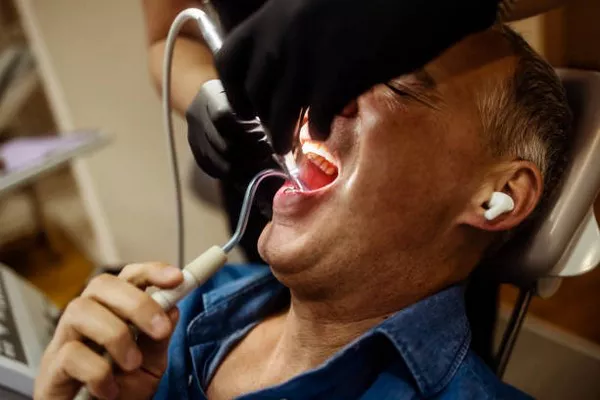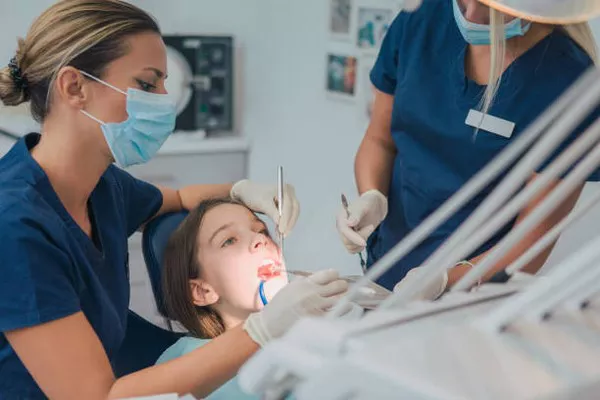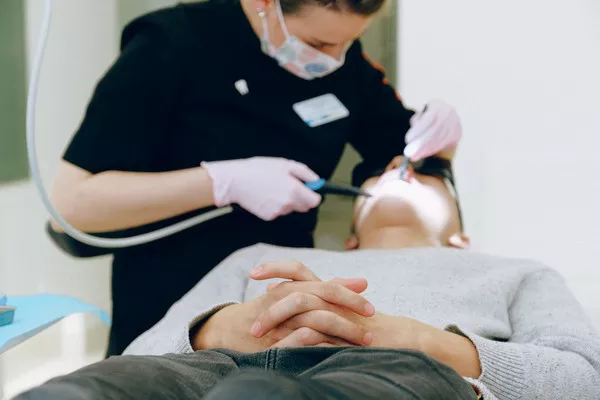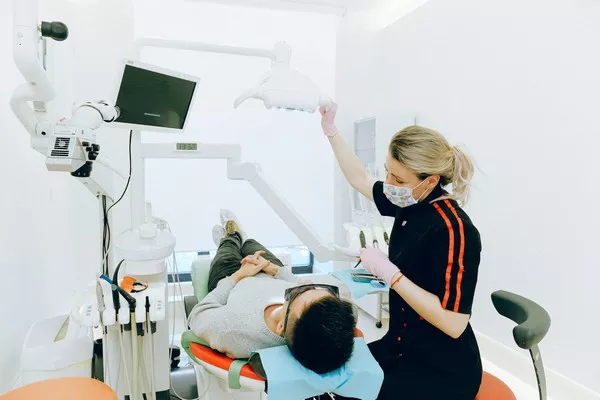Dental care is an essential aspect of overall health maintenance, and cavity fillings are among the most common procedures performed by dentists worldwide. However, the cost of cavity fillings can vary significantly depending on several factors, including the type of material used, the size and location of the cavity, the dentist’s fees, and geographical location. In this comprehensive guide, we’ll delve into the intricacies of cavity filling costs, explore different filling materials and their associated expenses, discuss factors influencing the cost, delve into insurance coverage, payment options, longevity, and value of various filling materials, stress the importance of preventive care, and highlight the significance of consulting with a dentist for personalized estimates.
Cost Range
Cost Range: Present the average cost range for cavity fillings, which can vary from $100 to $1,150 per tooth, depending on the material and other factors.
The cost of a cavity filling typically falls within a broad range, influenced by various factors. On average, patients can expect to pay between $100 and $1,150 per tooth for a cavity filling. However, it’s important to note that this range is not fixed and can fluctuate significantly based on individual circumstances.
Material Types and Costs
Material Types and Costs: Break down the costs associated with different filling materials such as amalgam, composite resin, gold, and porcelain.
- Amalgam Fillings: Amalgam fillings, often referred to as silver fillings, are one of the most cost-effective options, typically ranging from $100 to $250 per filling. Despite their affordability, they are durable and can withstand significant chewing forces.
- Composite Resin Fillings: Composite resin fillings, commonly known as tooth-colored or white fillings, offer aesthetic advantages over amalgam fillings. However, they tend to be more expensive, with costs ranging from $150 to $400 per filling.
- Gold Fillings: Gold fillings, although less common than other materials, are highly durable and biocompatible. However, they come with a hefty price tag, ranging from $250 to $4,500 per filling, depending on the amount of gold used.
- Porcelain Fillings: Porcelain fillings, also known as ceramic fillings, are renowned for their natural appearance and durability. They are typically priced between $250 and $4,500 per filling, making them a premium option for cavity treatment.
Factors Affecting Cost
Factors Affecting Cost: Explain the factors that influence the cost of a filling, including the size of the cavity, the tooth’s location, the dentist’s fees, and geographical location.
- Size of the Cavity: The size of the cavity directly impacts the amount of material required for the filling. Larger cavities necessitate more extensive treatment, resulting in higher costs.
- Tooth Location: The location of the affected tooth within the mouth can also influence the cost. Teeth located in harder-to-reach areas may require additional time and effort to fill, affecting the overall price.
- Dentist’s Fees: The experience and expertise of the dentist performing the procedure can affect the cost of cavity fillings. Highly skilled dentists may charge higher fees for their services.
- Geographical Location: The cost of dental care can vary significantly depending on the region or country where the treatment is sought. Urban areas and regions with higher living costs generally have higher dental fees.
Insurance Coverage
Insurance Coverage: Discuss how dental insurance can impact the cost and what portion of the filling cost is typically covered by insurance.
Dental insurance coverage for cavity fillings varies depending on the specific insurance plan. In general, most dental insurance plans cover a percentage of the cost of cavity fillings, typically ranging from 50% to 80%. However, it’s essential for patients to review their insurance policy carefully to understand their coverage limits, copayments, and any exclusions that may apply. Additionally, some insurance plans may have waiting periods or restrictions on coverage for pre-existing conditions, so it’s crucial to be aware of these factors before undergoing treatment.
Payment Options
Payment Options: Offer information on payment plans, discounts, or tax-advantaged savings accounts that can help manage the cost.
For patients concerned about covering the cost of cavity fillings, several payment options and financial solutions may be available:
- Payment Plans: Many dental practices offer flexible payment plans that allow patients to spread the cost of treatment over time. These plans typically involve monthly installments and may be interest-free or carry a low-interest rate.
- Discounts: Some dental offices offer discounts for cash payments or upfront payment for treatment. Patients can inquire about any available discounts when scheduling their appointment.
- Health Savings Accounts (HSAs) or Flexible Spending Accounts (FSAs): HSAs and FSAs allow individuals to set aside pre-tax funds to cover medical expenses, including dental treatments like cavity fillings. These accounts can provide a tax-advantaged way to save for and pay for dental care.
- Dental Financing Companies: Patients may also explore third-party financing options through dental financing companies. These companies specialize in providing loans specifically for dental treatments, allowing patients to manage their dental expenses with convenient repayment terms.
Longevity and Value
Longevity and Value: Provide insights into the durability of different filling materials and their long-term value.
When considering the cost of cavity fillings, it’s essential to factor in the longevity and value offered by different filling materials:
- Amalgam Fillings: While amalgam fillings are cost-effective, they may need to be replaced more frequently than other materials due to wear and tear over time.
- Composite Resin Fillings: Composite resin fillings offer excellent durability and aesthetics, making them a popular choice for many patients. With proper care, they can last for many years.
- Gold Fillings: Gold fillings are renowned for their longevity and durability, often lasting for decades with proper oral hygiene practices.
- Porcelain Fillings: Porcelain fillings combine durability with a natural appearance, providing long-lasting results that blend seamlessly with the surrounding teeth.
Ultimately, the value of a filling material depends on factors such as durability, aesthetics, and cost-effectiveness, which should be carefully considered when making treatment decisions.
Preventive Care
Preventive Care: Emphasize the importance of preventive care to avoid future cavities and potential savings in dental costs.
While cavity fillings are an effective treatment for addressing existing tooth decay, preventive care is key to avoiding future cavities and reducing the need for extensive dental work. Patients can maintain optimal oral health by:
- Brushing teeth twice a day with fluoride toothpaste
- Flossing daily to remove plaque and debris from between teeth
- Limiting sugary and acidic foods and beverages
- Visiting the dentist regularly for check-ups and professional cleanings
- Considering dental sealants or fluoride treatments for added protection against cavities
By prioritizing preventive care and adopting healthy oral hygiene habits, patients can minimize the risk of cavities and potentially reduce their long-term dental costs.
Consultation with Dentist
Consultation with Dentist: Advise on consulting with a dentist for a personalized estimate based on the patient’s specific situation.
When considering cavity fillings or any dental treatment, it’s essential to consult with a qualified dentist for personalized advice and treatment recommendations. During a consultation, the dentist will assess the patient’s oral health, discuss treatment options, and provide a personalized cost estimate based on the specific circumstances. Additionally, the dentist can address any questions or concerns the patient may have, helping them make informed decisions about their dental care.
Conclusion
The cost of a typical cavity filling can vary depending on various factors, including the filling material, size and location of the cavity, dentist’s fees, and geographic location. Patients should carefully consider their options, explore insurance coverage and payment options, and prioritize preventive care to maintain optimal oral health. By consulting with a dentist for personalized advice and treatment, patients can make informed decisions and achieve optimal outcomes for their dental health.
FAQs About Cavity Fillings
1. How much is a filling in Hong Kong?
The cost of a cavity filling in Hong Kong can vary depending on several factors, including the type of material used for the filling, the size and location of the cavity, and the dentist’s fees. On average, patients in Hong Kong can expect to pay between HK$800 to HK$3,000 per tooth for a cavity filling. However, prices may differ between dental clinics, so it’s advisable to consult with a dentist for a personalized cost estimate.
2. How much does it cost to fill a cavity in the US?
The cost of filling a cavity in the United States can vary significantly depending on factors such as the type of filling material, the complexity of the procedure, and the dentist’s location and experience. On average, patients in the US can expect to pay between $100 to $500 per tooth for a cavity filling. However, prices may be higher in certain regions or for premium filling materials such as gold or porcelain.
3. Is it cheaper to pull a tooth or fill a cavity?
In general, filling a cavity is considered a more cost-effective option compared to extracting a tooth. While the upfront cost of filling a cavity may be higher than extracting the tooth, preserving natural teeth through cavity fillings can prevent future complications and the need for costly tooth replacement options such as dental implants or bridges. Additionally, maintaining a full set of teeth contributes to overall oral health and function.
4. How much does a filling cost for tooth decay?
The cost of filling a cavity caused by tooth decay can vary depending on factors such as the severity of the decay, the size and location of the cavity, and the chosen filling material. On average, patients can expect to pay between $100 to $500 per tooth for a filling to address tooth decay. However, the final cost may vary based on individual circumstances and treatment requirements. It’s essential to consult with a dentist to determine the most appropriate and cost-effective treatment option for tooth decay.



























